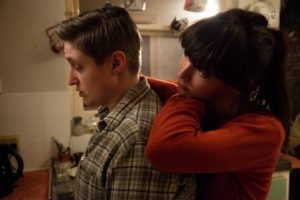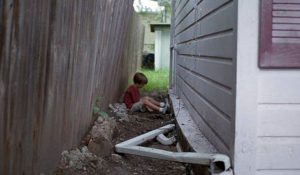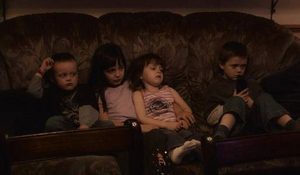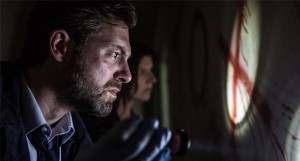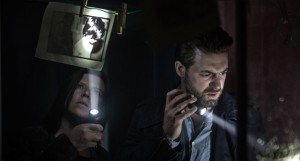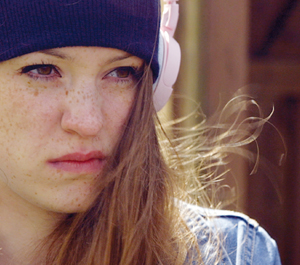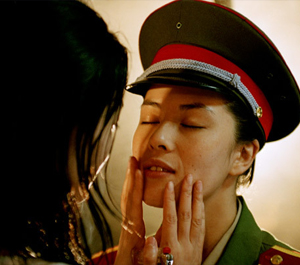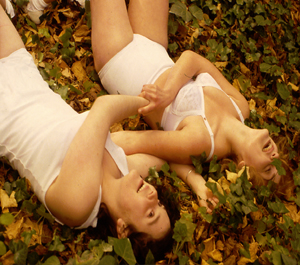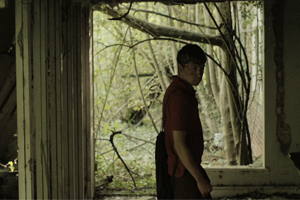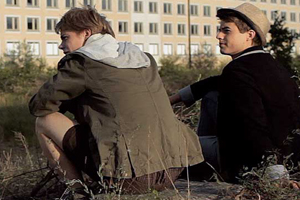Here at Peccadillo we like to think we live in an incredibly accepting society; this year the UK was named as the leader in LGBT equality in Europe. With this rise in diversity and open-mindedness we have numerous terms, old and new, being used more and more in everyday life.
Out on DVD now, 52 Tuesdays is the unique debut feature from director Sophie Hyde and one of our favourite releases this year. It explores an important aspect of our lives – the ironic constant – change. Set and filmed over the course of a year, the film tells the compelling story of James and Billie, mother and daughter, and their weekly meeting every Tuesday as James undergoes his transition from female to male and Billie from adolescence to adulthood.
Considering the power of words to help define, but also hurt when used incorrectly, we’ve put together a list to guide even the hippest of Queens:
Trans: can be used as an umbrella term to include many experiences of sex and gender: trans, transsexual, transgender, genderqueer etc.
Transgender: an umbrella term and identity used to describe all kinds of people who sit outside the gender binary or whose gender identity is different from the sex assigned to them at birth. May or may not feel the need to access hormone therapy and/or surgery.
Transition: transitioning often consists of a change in style of dress, selection of a new name and a request that people use the correct pronoun. This may or may not include medical care like hormone therapy, counselling and/or surgery. This can also be called ‘affirmation’. Not all trans people choose to use the word ‘transition’ to describe their experiences.
Gender: can refer to biological sex, social roles or gender identity. There are many genders, however the most commonly recognised are male and female.
Gender identity: refers to a person’s internal sense of being male, female, something other, or in between. Everyone has a gender identity regardless of whether they are trans or not.
Gender binary: is the classification of sex and gender into two separate categories of masculine and feminine. Most societies divide people into these two distinct categories which excludes many people who don’t fit neatly into either category.
Gender non-conforming: refers to people who do not identify as, or who do not express themselves as, completely male or female and/or who feel that they don’t fit into/ or prescribe to / or agree with, the gender binary of male or female.
Sexuality/Sexual orientation: the nature of a person’s basic sexual attraction to other people. i.e. straight/lesbian/bi/queer/pansexual/homosexual /heterosexual.
Cross dresser: a person who has the need to express an alternative gender identity through the way they dress and to be accepted in that role on a less permanent basis.
Drag: refers to theatrical/stage performances of gender. Includes drag kings and drag queens.
Gender affirmation (often known as gender reassignment or gender transition): the physical, legal and social process of transitioning gender. May include surgery/hormone treatment, changing name, using a different pronoun and changing your birth certificate gender.
Gender expression: is how someone presents their gender to the world. This can mean through the way a person physically presents as well as the way they act. This can be through appearance, dress, mannerisms, speech patterns and social interactions.
Gender neutral pronouns: any pronoun other than he/his/him or she/her such as it/its, they/their/them, one, heart/hearts, droid/droids or anything else that someone may choose to use.
Genderqueer: refers to people who do not identify as, or who do not express themselves as, completely male or female. Genderqueer people may or may not identify as trans.
Heteronormativity: a view implying that all people fall into only one of two genders (i.e. male or female), that there are particular roles that men and women should follow, and that heterosexuality (i.e. attraction to the opposite gender) is the only ‘normal’ sexuality.
Intersex: a general term used for a variety of people born with anatomy or physiology which differs from current ideas of male and female. This is sometimes known as indeterminate gender.
Transphobia: prejudice against, and/or fear of trans people, or anyone thought to be trans. Transphobia can include violence, harassment and discrimination as well as the general idea that says everyone must fit into male or female. Homophobia works in the same way but is aimed at anyone seen as outside heterosexuality.
Transsexuality: the medical or psychiatric term for a person who transitions from one gender to the other. People can also use ‘transsexual’ to describe themselves. Some people think that transsexuality is biological, this issue is constantly debated and often divides the trans community rather than unites it.
Transvestite: someone who dresses in the clothes usually worn by the opposite sex for fetish or arousal purposes. Transvestites, like anyone else, may be gay, lesbian, bisexual, heterosexual, queer, or something else.
Source: Gender Questioning by Trans Melbourne Gender Project, Gay and Lesbian Health Victoria & Rainbow Network Victoria, http://www.glhv.org.au/files/GQv3.pdf



